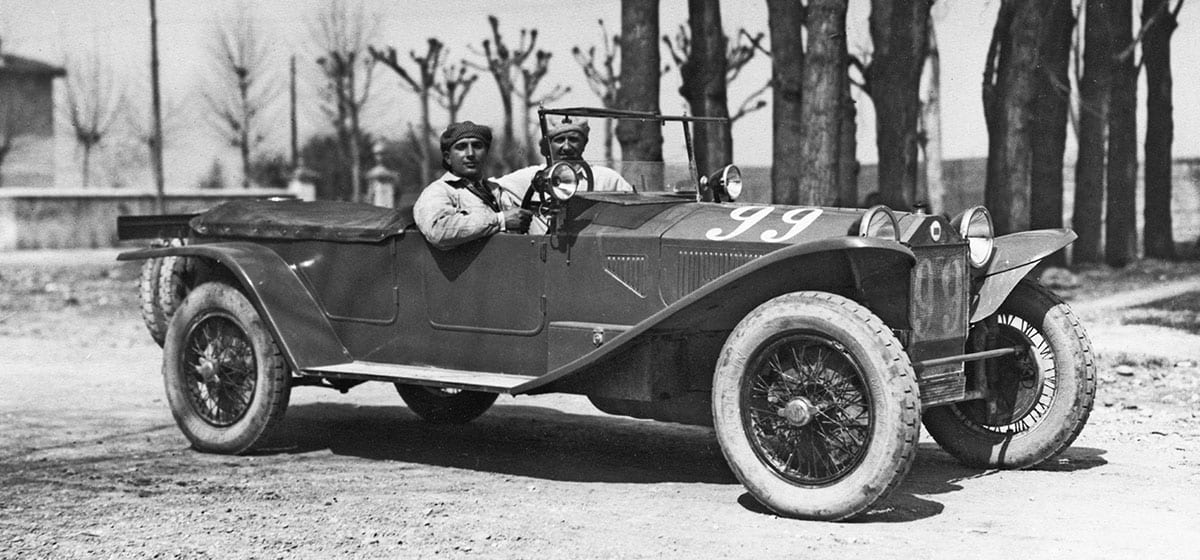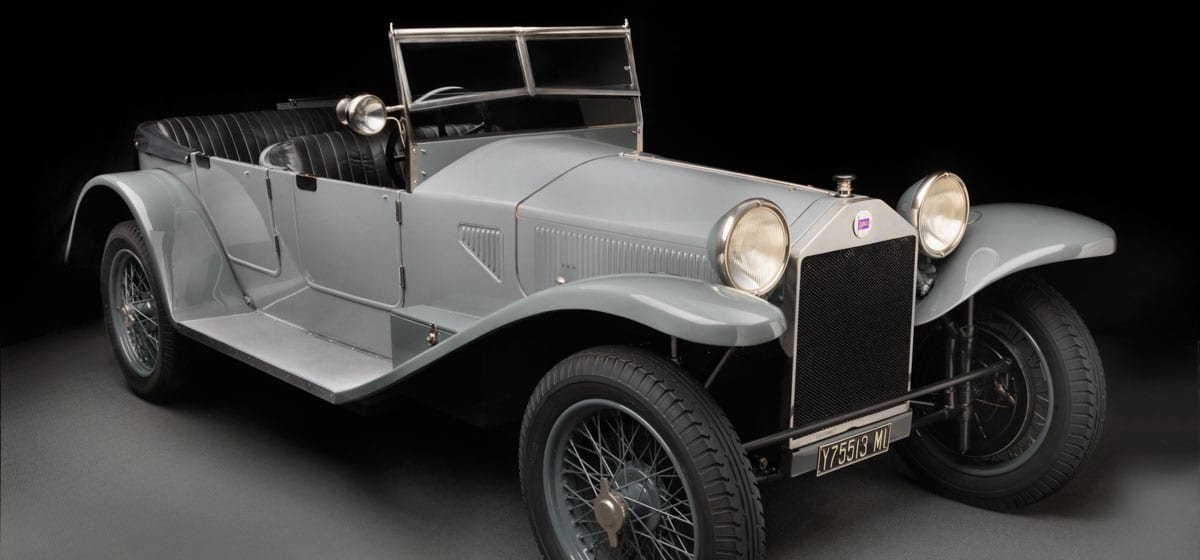Tech Specs
Narrow angle (14 degree) V4 engine, two valves per cylinder, single overhead camshaft 2370 cc, 59 hp at 3250 rpm.
Before/After
1927 Lancia


About the 1927 Lancia Lambda Torpedo Tourer
It was, as legends go, a stormy sea crossing that inspired Italian automotive Vincenzo Lancia to envision a car with a more durable chassis/body “unit”. Lancia recognized the superior rigidity of the ocean liner’s hull compared to the inherent flexibility in the typical 1920s motorcar body, with its flimsy body bolted to a whippy, ladder-style frame. Piqued, Lancia soon commissioned his trusted lead engineer, Battista
Falchetto, to immediately translate his concept into a workable unitary body design coupled with a practical, yet rugged, independent front suspension system.
Falchetto, working overnight, quickly presented Lancia with sketches of 14 different designs for the improved suspension. Lancia decided Falchetto’s improved “sliding pillar” system was best for superior road holding, precise steering and safety in the case of a spring failure. The novel hydraulic dampers were integral components to the suspension design and are the forerunners of the modern shock absorbers.
The power unit of Lancia’s new Lambda was just as unconventional as the rest of the car. Engineers Rocco and Cantarini devised a compact 2120cc single overhead camshaft V4 engine with its cylinders set at a daringly narrow angle. It turned at a dizzy 3250 rpms and gave a top speed of over 72 mph. Early models had a three speed transmission, but four speeds forward were specified in 1925. Front wheel braking was standardized from the start.
The very unorthodoxy of the Lambda made it a remarkable performer, with the ability to negotiate a winding road faster than anything that Lancia – and most other manufacturers – had ever built. Its sporting achievements were legion, most notably a stunning 1-2-3 overall victory in the first running of Italy’s legendary 1000-mile Mille Miglia road race in 1927.
The Lambda was built in nine series between 1923 and 1931, a total of close to 13,000 cars. Demands for custom coachwork led to the option of a separate chassis from 1927 on, when engine displacement was increased to 2.4 liters. But connoisseurs regard the unitary-bodied, short chassis Seventh Series – as the car shown here – to be the pinnacle of Lambda development. Demand for yet more performance led to the introduction of a 2.6 liter engine for the Eighth Series unveiled in 1928. Many enthusiasts retrofitted the new power unit in the earlier Lambdas, and this car is now powered by a 69 horsepower, Eighth Series (2570cc) engine to give it a top speed of 80mph.











